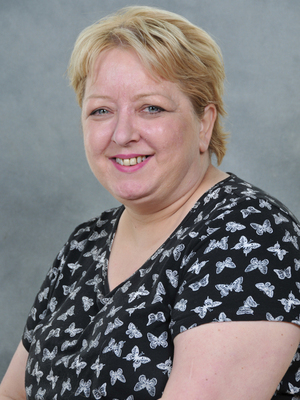Welcome to Year 6 - Amethyst Class
Staff

Miss N Muia
Amethyst
BA (Hons) MA

My name is Miss Muia and I love being at Bewsey Lodge Academy as I work with many amazing pupils and members of staff. My main role is teaching Year 6 and leading the maths curriculum. I also work with the Local Authority to manage pupil attendance

Mrs B Albiston
Amethyst


Mrs C Marsh
Amethyst

PE Day & PE Kit
PE will take place on Thursday.
Please ensure you child comes to school in their PE Kit on that day.
What's New
Download Timetable
Snack Money
Morning snack can be sent from home or purchased from school. Anyone buying snack from school must commit to the whole week and pay via ParentPay on Monday morning before 8:30am. The maximum amount snack will cost is £2.50 per week. There is also an option to pay for the whole term.
Reading Books
Reading Books will usually be changed upon request from the children.
Knowledge Organiser
Homework
Children will get up to 20 spellings per week to learn at home. They will also practice times tables and arithmetic. They will be handed out on a Friday and collected in the following Friday.
Recent Terms Archive
Welcome to Amethyst Class

Overview
Class Topics For Each Half Term
Topic
Themes to be explored
Autumn 1:
River Monsters
Our first Geography topic will see us developing an understanding or rivers, which will include their uses, features and effect on the environment. Amethyst class will get the chance to enhance their fieldwork skills by visiting the source of the River Mersey where we will look at the key features for ourselves. We will also study how rivers are formed; explore the journey of a river from source to mouth; investigate why rivers are important and what they are used for; river pollution and its effects; as well as choosing a river to investigate in depth.
Links to support learning: River Facts Science
Autumn 2:
What Have the Ancient Greeks Taught Us?
A history focus where we will learn about the civilization and history of ancient Greece including the government, philosophy, science, Athens, Sparta and the Olympic Games. We will learn how Ancient Greece formed the foundation of much of Western culture today: everything from government, philosophy, science, mathematics, art, literature, and even sports were impacted by the ancient Greeks. Linking their legacy of the democratic process, we will take part in our own ballot when selecting new house vice-captains.
Links to support learning: BBC History Science
Spring 1:
Why Climb the Himalayas?
Our Himalayas topic enables us to understand how mountains are formed and how different mountain ranges have shaped over time. We will look at the key aspects of a mountain range and identify the key aspects of physical geography, such as climate zones and biomes. Not only will be looking at the courage of extreme adventurers attempting to summit the highest peaks, we will also focus on what living in extreme conditions is like and the difference in cultures between us and the Nepalese.
Links to support learning: The Himalayas Science
Spring 2:
This term we will read, amongst others, Alfred Noyes's poem, The Highwayman. It is a narrative poem about a dashing highwayman who robs travellers by night. He falls in love with the landlord’s daughter, Bess. What makes this poem a definite classic is its masterful storytelling and the way it combines elements of romance, adventure, and tragedy. We will use these themes to write in a variety of genres: witness reports, letters, an argument and a dialogue.
Links to support learning: PoemThe Highwayman
Summer 1:
Newsround will be keeping us informed of current events that are happening in the world. We will use our journalistic writing skills (newspaper articles, television reports, radio scripts and blogs) to report on what affects us in our local community. We will even write to our local M.P. to see if we can influence change that also affects our communities.
Links to support learning: Newsround The Guardian
Summer 2:
It’s all about science this term where we will look at the discoveries that brought us both electricity and light. How did people manage without electricity? It makes all sorts of things work, from little things, like hair dryers, to big things, like all the lights in our houses and schools. Once we have discovered how to create our own electrical circuitry to power lights, we will then move on to how we actually see the things we see. From the human eye to Joseph’s Swan’s first light bulb, we will realise that our brains interpret colour and light differently to other mammals.
Links to support learning: Light Electricity
